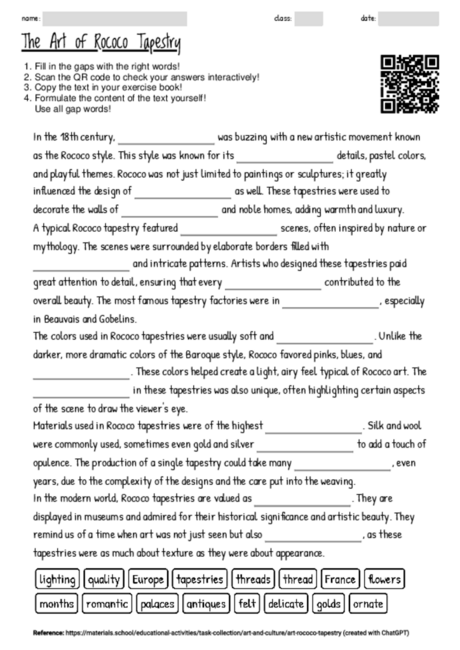The Art of Rococo Tapestry
Cloze texts like the one created on Rococo tapestries serve as an effective tool in language learning, particularly for students aged 12 to 16. This approach allows learners to focus on key terms and concepts in a context-rich environment, enhancing vocabulary acquisition and reading comprehension. The text on Rococo tapestries introduces students to a specific historical art movement, making it a useful resource for interdisciplinary teaching, bridging language arts with history and art education.
The selection of semantically important terms in the cloze text helps students identify and understand the core elements of the Rococo style in tapestries. This is crucial in developing a deeper appreciation for art history and its relevance. By using short sentences and clear language, the text remains accessible to younger readers, ensuring that the content is engaging without being overwhelming.
Incorporating this cloze text into different teaching phases can be very beneficial. In the introduction phase, it can spark curiosity about Rococo art and set the stage for deeper exploration. During the development phase, it can be used to reinforce vocabulary and concepts introduced in lessons. In the conclusion phase, the text can serve as a review tool, helping to consolidate the students' understanding of the Rococo style.
Overall, the use of cloze texts like this one supports diverse learning objectives, from enhancing language skills to providing cultural and historical insights. It's a versatile tool that can be adapted to various learning styles, making it a valuable addition to the teaching and learning process.

